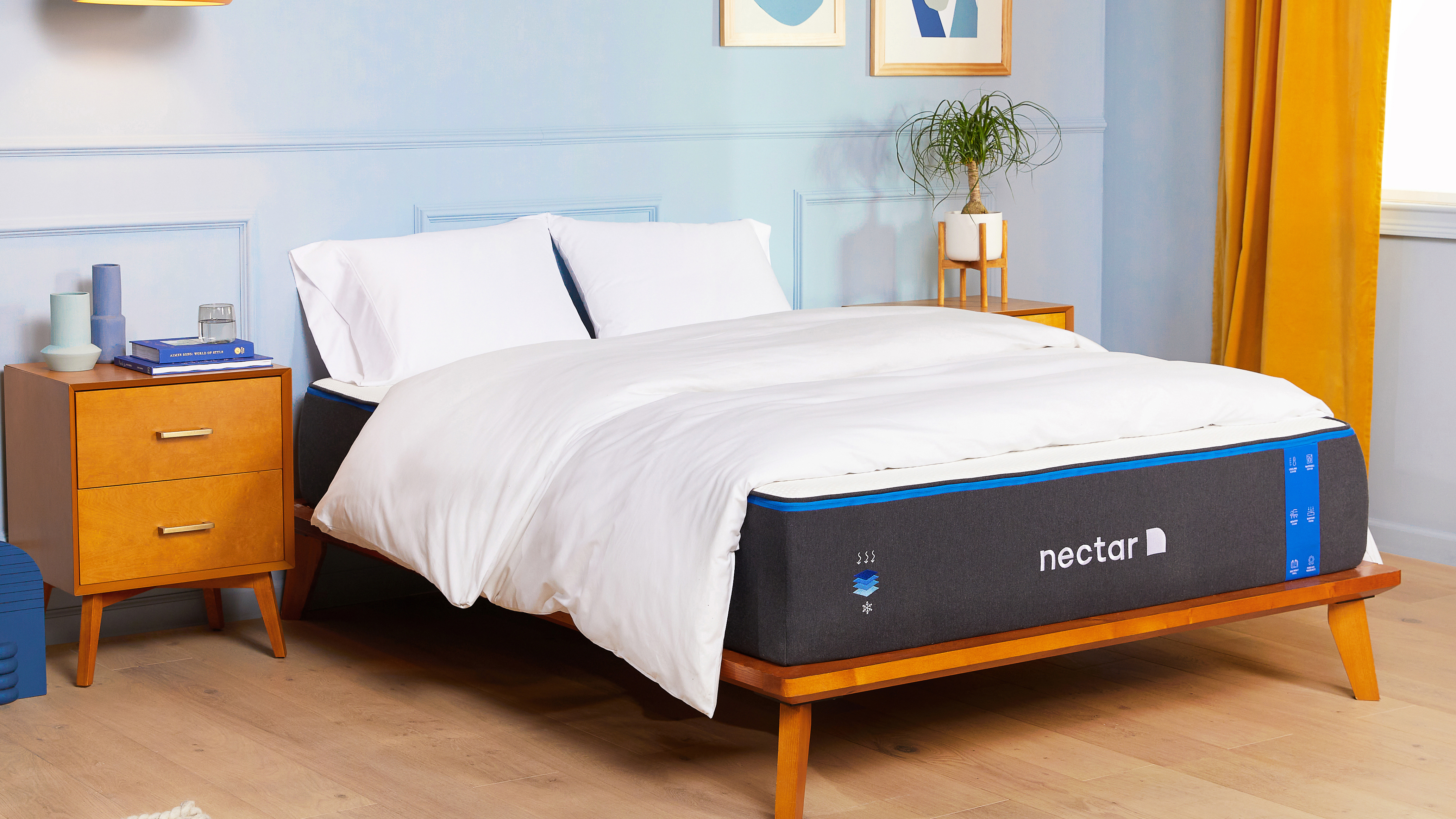How do mattress warranties work and what do they cover?
Our complete guide to how mattress warranties work, what voids them, and which brands offer the best coverage

In general terms, a mattress warranty covers you against manufacturing defects, but some warranties are better than others. If you read our best mattress guide you will notice that we have listed the warranty period for each model, and here we go into more detail about what different mattress warranties entail – and what voids them.
When choosing a mattress, it’s easy to focus on factors such as pressure relief, cooling and support, but it’s just as important to consider the warranty. They cover faulty components issues and certain amounts of sagging, but they don’t cover normal wear and tear, accidental rips or spillages.
You can see immediately that it’s important to take care of your mattress to not void the warranty. Using a good mattress protector helps keep it safe from sweat, stains, bacteria and allergens. If you want to go the whole nine yards, add on the best mattress topper for your budget too. This adds further protection but mostly extra sleeping comfort.
Here we answer the big question of how do mattress warranties work, what they do and don’t cover, and which brands offer the best coverage.
What is a mattress warranty?
A mattress warranty is a brand’s guarantee that its product will be replaced, repaired or refunded if there’s any issue with the manufacturing or workmanship. Most warranties are only applicable to the original buyer of the mattress and cannot be transferred to a new owner.
Each traditional and best mattress in a box maker has its own terms and conditions of what its warranty covers, and warranties differ in length too, ranging from 5 years to a lifetime warranty depending on the brand. Some are limited warranties, which means they only cover certain parts of the mattress, such as coils or foam. Most warranties cover sagging, but there are fairly precise terms about the amount of sagging that qualifies (down to the quarter of an inch in some cases).

At the other end of the scale, some manufacturers offer a lifetime warranty, which lasts the entirety of the ownership of the mattress by the original buyer. As we explain in our feature answering how long does a mattress last, the terms for a lifetime warranty also vary from brand to brand.
DreamCloud, for instance, will replace your mattress if manufacturing defects are detected in the first ten years of ownership, and then repair, re-cover or replace it after ten years if any issues are deemed to be manufacturing defects. Layla also offers a lifetime warranty on materials and workmanship, and will cover sagging of more than an inch, loss of shape and foam-cracking/splitting.
One final thing to consider is whether where you live is covered by the warranty, as some only apply to certain territories. We recommend reading the warranty details of your chosen mattress before you buy.
What do mattress warranties cover? The basics
While warranties vary from brand to brand, most cover the following manufacturing problems:
- Sagging – check on the brand’s website for precise measurements
- Broken coils or coils protruding through the mattress
- Seams coming undone
- Bunching of foam/uneven surface
- Faulty handles
- Manufacturing flaws in the mattress cover
- Sizing inconsistencies
When contacting the company about a defective mattress, it’s worth being as detailed as possible and taking plenty of pictures. What you might consider to be a manufacturing defect could be construed as normal wear and tear by the brand, especially if you have owned the mattress for some time.
Remember that most manufacturers confidently offer long warranties as they believe in the durability and longevity of their product, so any manufacturing defect will need to be proved as thus.
If a mattress warranty is limited, then it will only cover certain things, as outlined in the warranty information. With some limited warranties, free replacements are valid in the first ten years for example, while after that the mattress will be sent off for repair or replaced for free, but you may have to pay for delivery. This is known as a non-prorated warranty.
With a prorated mattress warranty the buyer may have to foot some of the cost of replacing or repairing the mattress. This is likely to be a small percentage initially, but may increase the longer you own the mattress.
It is also possible to have a warranty that combines both prorated and non-prorated. For example, the warranty is non-prorated for a certain time, then it switches to prorated. It’s always best to check before you make a claim.
Note that if you get a replacement mattress under your warranty, then the replacement’s warranty may only be valid from the purchase date of the original defective product.
What do mattress warranties NOT cover?

There are certain things that are not covered, and this is particularly true of limited mattress warranties, so check the terms and conditions before you contact the manufacturer.
The main thing to remember is that mattress warranties do not cover the general comfort of a mattress, which is why it’s important to take advantage of the risk-free sleep trial if your mattress has one. The trial will allow you to see whether the mattress is comfy and supportive enough. Most makers of spring, latex, hybrid and memory foam mattresses offer risk-free trials, meaning you can get a full refund if you return it by the end of the trial period.
Other key things mattress warranties do not cover include:
- Sagging that measures less than a certain amount (check the brand’s website).
- Accidental damage such as rips, burns, spillages or stains etc.
- Discoloration from sweat.
- Normal wear and tear – this is a somewhat vague term that covers what is reasonably expected to occur with regular use of the mattress, such as scuffing, occasional loose threads, mild sagging/indents.
What can void a mattress warranty?
There are a few things that can void a mattress warranty, including selling or passing on your mattress, as the warranty only applies to the original buyer. Other things that can void a mattress warranty include:
- If your mattress has any stains or spillages on it that make it unhygienic or unsafe to return for repair.
- If the law tag is removed. This tag contains legal information and if it is removed for any reason, the mattress is instantly exempt from warranty.
- If you do not take proper care of your mattress by rotating or flipping it (where applicable). Most mattress manufacturers will give clear guidelines on how to take care of your mattress and if these instructions have clearly not been followed then the warranty will be void.
- Leaving the mattress in its box upon arrival for longer than is stated. If your mattress arrives rolled up in a box, then it will usually need to be unpacked within a certain timeframe. If this is not the case then it can cause damage to the mattress.
Other things that can void the warranty is if the mattress is used with an unsuitable bed frame or slat setup, if the (fixed) cover has been removed, or if the mattress has been used the wrong way up, which has caused damage to the softer side.
Do mattress warranties cover sagging?

While most warranties do cover sagging, different brands are fairly precise about what constitutes enough sag to be covered by the warranty. The best way to test the depth of the sagging is to place a piece of string at one end of the mattress and stretch it to the other side. There will now be a line above the sag from which to measure into the dip.
Layla covers sagging of 1 inch or more, while Nectar stipulates visible indentation greater than 1.5 inches, and that the mattress has always been used with a proper foundation or bed base. Check each brand’s guidelines before you make a claim.
Do mattress warranties cover bed bugs?
Most brands do not include bed bug infestations in their warranties, as this is not considered a manufacturing defect. However, there is plenty you can do to prevent bed bugs from infesting your mattress and bed linen. This includes vacuuming regularly, keeping your bedroom clutter-free and learning how to clean a mattress. You can make this part of your routine when rotating it – read our feature on how often should you rotate or flip a mattress for guidance.
One of the best ways to keep your mattress under warranty is to look after it properly and this includes using a protector, which will also keep bed bugs, mites and allergens away from your bed.
Which brands offer the longest mattress warranties?
If you’re looking for long mattress warranties, then consider the following brands...
In the US:
Saatva – the brand’s Classic mattress has a 15-year non-prorated warranty (see further down for our definition of prorated and non-prorated mattress warranties). Other Saatva models, including the Solaire, have up to a 25-year warranty.
Nectar – these mattresses have a Limited Nectar ‘Sleep Forever’ lifetime warranty, which offers a free replacement mattress in the first ten years, and then a repair, re-cover or replacement thereafter (you will also incur a transportation cost of $50 each way).

DreamCloud – the Lifetime Warranty offers a free replacement for defective mattresses in the first ten years, then a repair, re-cover or replacement after ten years (with transportation costs).
Avocado – the brand’s 25-year warranty includes the first ten years full coverage non-prorated, while years 11-25 have prorated limited coverage.
Layla – the lifetime warranty here covers repair or replacement for a defective mattress but may incur fees for transportation.
In the UK:
Nectar – these mattresses have a Limited Nectar ‘Sleep Forever’ lifetime warranty, which offers a free replacement mattress in the first ten years, and then a repair, re-cover or replacement thereafter (you will also incur a transportation cost of £65 each way).
DreamCloud – the lifetime warranty offers a free replacement for defective mattresses in the first ten years, then a repair, re-cover or replacement after ten years (with transportation costs).
GhostBed by Nature’s Sleep – for the first ten years of the 20-year warranty, the company will replace or repair the mattress if it is deemed defective. For years 11-20 the company will repair the mattress with the buyer paying for handling, or replace it at a prorated cost.
Dormeo – this brand has up to 20 years warranty on selected mattresses including its Octaspring mattresses.
How do mattress warranties work: summary
How do mattress warranties work: summary
Most warranties are designed to be longer than the expected life of the mattress itself, and are valid from the date of purchase. This gives a good indication of how long the mattress itself is expected to last with regular use. For instance, a 10-year mattress warranty means that your mattress is designed to last 8 years or so when looked after properly.
With longer warranties, check to see if the term changes after the first ten years, as if it is prorated, then you will probably have to spend extra money to get it replaced or repaired. Because mattress warranties usually only cover manufacturing defects, it’s worth making sure you look after your mattress by rotating it regularly, keeping it clean and using a protector to keep it safe from dust, stains, bugs and allergens.
Remember that the wrong firmness or an uncomfortable mattress doesn’t fall under the warranty, so make sure you take full advantage of the sleep trial (if the brand offers one), as this will be your biggest chance to return the mattress and get your money back if it doesn't work out.
If you do find a defect in the mattress and wish to use the warranty, then the brand’s website should have all the information you need to get the ball rolling for your repair or replacement mattress.
Time to upgrade? We'd recommend the following...
Read more:
- The best cheap mattress deals to shop now
- The best pillow for every budget and sleep style
- Our guide to the top weighted blanket for adults
- The latest Tempur-Pedic mattress sales for comfier sleep for less
- Our guide to the best Saatva mattress sales and deals
- An expert guide to Black Friday mattress deals
Sign up to get the BEST of Tom's Guide direct to your inbox.
Get instant access to breaking news, the hottest reviews, great deals and helpful tips.
Grace is an experienced sleep writer and mattress reviewer who also contributes to our sister site TechRadar, among other Future plc brands. She's a big fan of organic sleep products and has recently invested in a wool mattress topper that she quite happily describes as "life-changing." (Hey, we're serious about our sleep products). When she isn't testing mattresses or writing about sleep, Grace enjoys reading and creative writing, and incorporates meditation and yoga into her wellness routine.

